What To Know About Choosing An Outdoor Grill
Whom to Work With
An outdoor kitchen designer or grill expert is a helpful resource, especially if you’re adding or updating an outdoor kitchen or simply updating your current grill setup. A pro can help guide you toward the right grill for your cooking style and help you decide which, if any, accessories or add-ons are right for you. They can also provide advice on planning ahead if you might be expanding your outdoor kitchen space in the future.
Types of Grills
Grills are defined by the fuel they use, with gas and charcoal grills as the two main options. Both have their die-hard fans and their pluses and minuses. Gas grills win out when it comes to grilling ease and flexibility.
A charcoal grill will give you the traditional barbecue taste (and aroma), although it may take you longer to master the intricacies of temperature regulation if you want to go beyond cooking hot dogs and hamburgers. Charcoal grills also come in a wider range of sizes.
Two other types worth checking out are pellet grills, which are cleaner burning than charcoal, and electric grills, which can often be used when other grill types are not feasible. If you have the space, you can combine a gas grill with a kamado style grill, ideal for smoking meats and cooking long and slow.
Grills are defined by the fuel they use, with gas and charcoal grills as the two main options. Both have their die-hard fans and their pluses and minuses. Gas grills win out when it comes to grilling ease and flexibility.
A charcoal grill will give you the traditional barbecue taste (and aroma), although it may take you longer to master the intricacies of temperature regulation if you want to go beyond cooking hot dogs and hamburgers. Charcoal grills also come in a wider range of sizes.
Two other types worth checking out are pellet grills, which are cleaner burning than charcoal, and electric grills, which can often be used when other grill types are not feasible. If you have the space, you can combine a gas grill with a kamado style grill, ideal for smoking meats and cooking long and slow.
Gas Grills
Pros. Gas grills are popular for good reason. They’re easy to start, usually with just a switch or a knob. It’s also easy to control their temperature, just as with an oven.
Gas grills come in a wide range of sizes and can be dropped into a counter or railing, supported by a moveable cart or base, or permanently installed in a counter and base.
Gas grills are a safe choice for decks and under overhead structures. They’re also your best choice if local regulations restrict or ban charcoal grills due to air quality issues or fire danger.
Pros. Gas grills are popular for good reason. They’re easy to start, usually with just a switch or a knob. It’s also easy to control their temperature, just as with an oven.
Gas grills come in a wide range of sizes and can be dropped into a counter or railing, supported by a moveable cart or base, or permanently installed in a counter and base.
Gas grills are a safe choice for decks and under overhead structures. They’re also your best choice if local regulations restrict or ban charcoal grills due to air quality issues or fire danger.
You can use either liquid propane or natural gas as your fuel. Liquid propane tanks are readily available and will allow you to move your grill to different locations.
You can also tie your grill into your home’s natural gas supply. While this is more expensive to start, it saves money in the long run because you will not need to keep replacing propane tanks. However, you wouldn’t be able to move your grill. If you’re unsure which fuel type you’d like to use, many gas grills can accommodate either choice.
You can also tie your grill into your home’s natural gas supply. While this is more expensive to start, it saves money in the long run because you will not need to keep replacing propane tanks. However, you wouldn’t be able to move your grill. If you’re unsure which fuel type you’d like to use, many gas grills can accommodate either choice.
Cons. Gas grills are generally more expensive than charcoal grills, and they aren’t available in the smallest sizes, which can be a drawback if you don’t have a large outdoor space. Only some gas grills allow you the option to sear your meat.
They also don’t naturally give you that smoky flavor most people associate with outdoor grilling, although adding a smoker basket for wood chips can duplicate that flavor.
They also don’t naturally give you that smoky flavor most people associate with outdoor grilling, although adding a smoker basket for wood chips can duplicate that flavor.
Charcoal Grills
Pros. Charcoal grills are the source of that familiar smoky “barbecue” flavor. They are also extremely versatile: You can sear over high heat, cook over direct heat or simmer, slow cook or rotisserie over indirect heat. You can even bake in a charcoal grill. They are generally less expensive than gas grills and come in a wider range of sizes.
Charcoal for the grill can be either lump charcoal or charcoal briquettes. Lump charcoal, though somewhat more expensive, has become a preferred choice because it is a natural wood fuel that has no additives or fillers. It is also a good starter, along with a charcoal chimney or an electric lighter, to start your barbecue. Charcoal briquettes include additives and are messier to clean up.
Cons. Charcoal grills do have some downsides. You will need to master the basics of starting the charcoal, and they take a longer time to heat up and also cool down. Cleaning charcoal grills also takes longer. There is usually a learning curve for how best to use indirect heat, smoke or rotisserie.
Charcoal grills have an open flame, which means they may be banned in some locations. You will need to place them away from any structures, including railings, overheads and decks, that might catch on fire if there are flares or sparks, which can limit where you put your charcoal grill. If your prime grilling spot is a deck, consider adding a fireproof mat beneath the grill to catch any burning ashes, embers or coals.
Pros. Charcoal grills are the source of that familiar smoky “barbecue” flavor. They are also extremely versatile: You can sear over high heat, cook over direct heat or simmer, slow cook or rotisserie over indirect heat. You can even bake in a charcoal grill. They are generally less expensive than gas grills and come in a wider range of sizes.
Charcoal for the grill can be either lump charcoal or charcoal briquettes. Lump charcoal, though somewhat more expensive, has become a preferred choice because it is a natural wood fuel that has no additives or fillers. It is also a good starter, along with a charcoal chimney or an electric lighter, to start your barbecue. Charcoal briquettes include additives and are messier to clean up.
Cons. Charcoal grills do have some downsides. You will need to master the basics of starting the charcoal, and they take a longer time to heat up and also cool down. Cleaning charcoal grills also takes longer. There is usually a learning curve for how best to use indirect heat, smoke or rotisserie.
Charcoal grills have an open flame, which means they may be banned in some locations. You will need to place them away from any structures, including railings, overheads and decks, that might catch on fire if there are flares or sparks, which can limit where you put your charcoal grill. If your prime grilling spot is a deck, consider adding a fireproof mat beneath the grill to catch any burning ashes, embers or coals.
Kettle and barrel grills. The rounded kettle grill, with its wide center, is a classic choice for a charcoal grill. You can find them in a range of sizes. The larger sizes generally have wheels, which makes them easy to move. They also can have a side prep area or can be built into a counter.
Barrel grills get their name from their look: a barrel turned on its side. Like kettle grills, they are a classic choice for a charcoal grill. You won’t find as many options for small barrel grills, but they may be your best choice if you really need to go big. They are generally freestanding, although, due to their size, they are more unwieldy than many kettle grills.
Barrel grills get their name from their look: a barrel turned on its side. Like kettle grills, they are a classic choice for a charcoal grill. You won’t find as many options for small barrel grills, but they may be your best choice if you really need to go big. They are generally freestanding, although, due to their size, they are more unwieldy than many kettle grills.
Kamado Grills
Pros. Known for their egg-like shape, these grills are an expensive choice for a grill, but they are also very durable and efficient. You’ll find both ceramic and metal versions. With a kamado grill, you have the easy starting ability of a gas grill and will get the smoky flavor of a charcoal grill. Kamado grills use lump charcoal or wood pellets.
Kamado grills excel as smokers, thanks to their ability to keep a steady temperature for a long period, but you can grill almost anything you would on a gas or charcoal grill. Their closed design also helps keep meats moist. The outside of a ceramic kamado grill will also remain cooler to the touch than a metal one and is easy to clean. You can set a kamado grill on a wheeled stand or build it into an outdoor kitchen.
Cons. In addition to the expense, there are other things to consider before purchasing a kamado-style grill. These grills are heavy and can be difficult to move, even when they have wheels. They also come in a limited range of sizes and have fewer available accessories. You will have to watch for flareups and flashes, which are rare but can happen if you aren’t taking simple safety precautions beforehand.
Pros. Known for their egg-like shape, these grills are an expensive choice for a grill, but they are also very durable and efficient. You’ll find both ceramic and metal versions. With a kamado grill, you have the easy starting ability of a gas grill and will get the smoky flavor of a charcoal grill. Kamado grills use lump charcoal or wood pellets.
Kamado grills excel as smokers, thanks to their ability to keep a steady temperature for a long period, but you can grill almost anything you would on a gas or charcoal grill. Their closed design also helps keep meats moist. The outside of a ceramic kamado grill will also remain cooler to the touch than a metal one and is easy to clean. You can set a kamado grill on a wheeled stand or build it into an outdoor kitchen.
Cons. In addition to the expense, there are other things to consider before purchasing a kamado-style grill. These grills are heavy and can be difficult to move, even when they have wheels. They also come in a limited range of sizes and have fewer available accessories. You will have to watch for flareups and flashes, which are rare but can happen if you aren’t taking simple safety precautions beforehand.
Pellet Grills
Pros. Pellet grills have gained favor with people who want to combine the natural flavor of a traditional charcoal barbecue with the ease of a gas grill. They’re easy to start and use and they heat up quickly. They excel at slow-cooking or smoking meats, but you can grill almost everything on them. You can also bake with a pellet grill, as they operate like a convection oven. Many now are available with both smart grill features and infrared cooking.
Like a gas grill, you ignite the grill and set the temperature. Food-grade wood pellets are used for fuel, giving the flavor of traditional barbecue without using charcoal. You can find them in both kettle and barrel styles. While most are freestanding, they can be built into an outdoor kitchen.
Cons. Pellet grills are less common and often more expensive than gas or charcoal grills. They come in a limited range of sizes and do not sear food as well as charcoal or the best gas grills. They need electricity to run, in addition to wood pellets, so you will need to have an outlet nearby. Wood pellets can be hard to find and can be expensive as well.
Though rare, pellet grills can also cause large flares or even an explosion when starting them up or cooling them down. You will need to be careful to follow all the safety precautions when starting your pellet grill and also when it has cooled down after use.
Pros. Pellet grills have gained favor with people who want to combine the natural flavor of a traditional charcoal barbecue with the ease of a gas grill. They’re easy to start and use and they heat up quickly. They excel at slow-cooking or smoking meats, but you can grill almost everything on them. You can also bake with a pellet grill, as they operate like a convection oven. Many now are available with both smart grill features and infrared cooking.
Like a gas grill, you ignite the grill and set the temperature. Food-grade wood pellets are used for fuel, giving the flavor of traditional barbecue without using charcoal. You can find them in both kettle and barrel styles. While most are freestanding, they can be built into an outdoor kitchen.
Cons. Pellet grills are less common and often more expensive than gas or charcoal grills. They come in a limited range of sizes and do not sear food as well as charcoal or the best gas grills. They need electricity to run, in addition to wood pellets, so you will need to have an outlet nearby. Wood pellets can be hard to find and can be expensive as well.
Though rare, pellet grills can also cause large flares or even an explosion when starting them up or cooling them down. You will need to be careful to follow all the safety precautions when starting your pellet grill and also when it has cooled down after use.
Electric Grills
Pros. More common for indoor use, electric grills are a great choice if other grilling options aren’t possible. They’re very easy to use — just plug them into an outlet and set the temperature. They also heat up quickly.
Smaller electric grills are ideal for countertops, small patios and balconies. Larger models won’t rival gas or charcoal grills in size, but they can handle something of a crowd. They also tend to be lower in price than the larger grills that use other fuel types.
Cons. On the downside, electric grills do require an outlet, so they aren’t quite as versatile when it comes to location. You also won’t get that classic grill flavor.
Pros. More common for indoor use, electric grills are a great choice if other grilling options aren’t possible. They’re very easy to use — just plug them into an outlet and set the temperature. They also heat up quickly.
Smaller electric grills are ideal for countertops, small patios and balconies. Larger models won’t rival gas or charcoal grills in size, but they can handle something of a crowd. They also tend to be lower in price than the larger grills that use other fuel types.
Cons. On the downside, electric grills do require an outlet, so they aren’t quite as versatile when it comes to location. You also won’t get that classic grill flavor.
Additional Grilling and Cooking Accessories
Once you’ve decided on your type of grill, it’s time to look at the add-ons and accessories. Smart grills, which include timers and temperature adjustment, allow the cook to enjoy the party without having to hover over the grill.
For charcoal grills, a chimney starter makes getting the grill going much easier. Adjustable grates for charcoal grills can be set at different heights above the coal bed, giving you more flexibility when it comes to the amount of heat the food will get.
In addition to the grill itself, look at additional grilling and cooking tools that will make your grilling center even more efficient. “If you are not finding exactly what you want, consider other items such as power burners, griddles or hibachi grills, Argentine-style grills, deep fryers or pizza ovens,” says Chef Alaina Pizzolato, who works with the BBQ Guys.
Once you’ve decided on your type of grill, it’s time to look at the add-ons and accessories. Smart grills, which include timers and temperature adjustment, allow the cook to enjoy the party without having to hover over the grill.
For charcoal grills, a chimney starter makes getting the grill going much easier. Adjustable grates for charcoal grills can be set at different heights above the coal bed, giving you more flexibility when it comes to the amount of heat the food will get.
In addition to the grill itself, look at additional grilling and cooking tools that will make your grilling center even more efficient. “If you are not finding exactly what you want, consider other items such as power burners, griddles or hibachi grills, Argentine-style grills, deep fryers or pizza ovens,” says Chef Alaina Pizzolato, who works with the BBQ Guys.
Side burners. A separate gas side burner will allow you to boil water for corn on the cob, slow-cook beans or prepare vegetables without having to try to provide two different temperature zones or crowd your main grill.
Side burners come in a range of sizes and power levels. You’ll find power grills that quickly heat up, making them ideal for boiling water or stir-frying vegetables. Others will have lower temperature options that are great for preparing sauces or simmering foods.
Griddles. A griddle provides a flat surface over or alongside the grates of a grill. It’s a great option for eggs and bacon but can also be a good choice for cooking delicate foods such as fish or searing vegetables.
You’ll find a number of griddle options for both gas and charcoal grills, from those that cover the entire grill surface to smaller ones you can set to one side. Check the specifications for your grill to see if there are recommendations for both griddle size and how tightly it should fit over the grill itself.
Side burners come in a range of sizes and power levels. You’ll find power grills that quickly heat up, making them ideal for boiling water or stir-frying vegetables. Others will have lower temperature options that are great for preparing sauces or simmering foods.
Griddles. A griddle provides a flat surface over or alongside the grates of a grill. It’s a great option for eggs and bacon but can also be a good choice for cooking delicate foods such as fish or searing vegetables.
You’ll find a number of griddle options for both gas and charcoal grills, from those that cover the entire grill surface to smaller ones you can set to one side. Check the specifications for your grill to see if there are recommendations for both griddle size and how tightly it should fit over the grill itself.
Deep fryers. A stand-alone deep fryer lets you fully submerge foods in deep oil or fat to cook at a high temperature. It’s the staple cooking option for fish frys but also a good choice or other foods, including your Thanksgiving turkey. Food cooked properly in a deep fryer will be crisp on the outside but tender and juicy inside.
Deep fryers designed for outdoor use are usually larger than those designed for indoors. Most use propane gas for fuel, although some small ones do run on electricity. Deep fryers need to be placed on a level surface; concrete is ideal. They also need to be used in the open, not under a covering or in an enclosure, and be at least 10 feet away from anything that can catch on fire, including a deck.
Safety precautions take on an added importance when using a deep fryer. They should never be left unattended, and you should keep a fire extinguisher nearby. It’s also a good idea to wear clothing that will protect your skin, have oven mitts readily at hand and wear shoes that will keep you from slipping if you spill oil. Keep people at a safe distance, especially children and pets.
Deep fryers designed for outdoor use are usually larger than those designed for indoors. Most use propane gas for fuel, although some small ones do run on electricity. Deep fryers need to be placed on a level surface; concrete is ideal. They also need to be used in the open, not under a covering or in an enclosure, and be at least 10 feet away from anything that can catch on fire, including a deck.
Safety precautions take on an added importance when using a deep fryer. They should never be left unattended, and you should keep a fire extinguisher nearby. It’s also a good idea to wear clothing that will protect your skin, have oven mitts readily at hand and wear shoes that will keep you from slipping if you spill oil. Keep people at a safe distance, especially children and pets.
Pizza ovens. A pizza oven is great for pizzas, of course. “A pizza oven will cook pizzas in just minutes,” chef Pizzolato says. It can also be used to prepare everything from appetizers and entrees to breads and desserts, all without having to take up your oven space indoors.
The traditional brick or stucco-clad wood-fired oven is what most people picture: a permanent installation, with the countertop or higher oven for easy access and wood storage below. Traditional wood-fired pizza ovens require a learning curve about how to heat them and control the temperature, but many people feel the results are worth the challenge.
The traditional brick or stucco-clad wood-fired oven is what most people picture: a permanent installation, with the countertop or higher oven for easy access and wood storage below. Traditional wood-fired pizza ovens require a learning curve about how to heat them and control the temperature, but many people feel the results are worth the challenge.
Newer pizza oven options include gas-fired ovens, which have the controls that make it easier to set and hold a specific temperature. These can be installed like their traditional counterparts. Hybrid options, which offer both temperature control and wood flavor, can also be found.
A portable countertop gas pizza oven only requires a stable surface of metal, wood or stone to sit on, making it a good choice for a smaller space (and a smaller budget).
If a full oven seems excessive for the amount of time you might use it, consider an insert for either a gas or charcoal grill. These are relatively inexpensive and easy to use.
All pizza ovens are designed to reach an internal temperature of at least 750 degrees Fahrenheit. This gives you a fast cook time that also allows you to achieve the complex flavors that high heat brings out in foods. They’re also easy to clean, as the high temperatures ensure that spilled foods will quickly burn off.
If a full oven seems excessive for the amount of time you might use it, consider an insert for either a gas or charcoal grill. These are relatively inexpensive and easy to use.
All pizza ovens are designed to reach an internal temperature of at least 750 degrees Fahrenheit. This gives you a fast cook time that also allows you to achieve the complex flavors that high heat brings out in foods. They’re also easy to clean, as the high temperatures ensure that spilled foods will quickly burn off.
Specialty drawers and cabinets. A cabinet to house fuel should also be included in your grill setup, whether you’re opting for a gas or charcoal grill. “Under a gas grill there needs to be some sort of cabinet for access to the hookup,” says Rob Douglass of Texas Custom Patios. A cabinet under or next to a wood-burning grill will serve as a handy weatherproof spot to store charcoal, wood or wood pellets.
Warming drawers may seem like a luxury, but they are useful if you’re cooking a variety of foods or have a crowd to feed.
Warming drawers may seem like a luxury, but they are useful if you’re cooking a variety of foods or have a crowd to feed.
Other Considerations for Adding a Built-In Grill
Size. Grills come in all sizes, from those barely big enough to cook a couple of hamburgers to ones large enough to feed the neighborhood. Grills sizes are generally determined by the total number of square inches. For most people, a medium grill with a range of 350 to 500 square inches will be fine.
A larger grill will give you more flexibility and grilling options, but it will also take up more space and use more fuel. A too-small grill might crowd the food and force longer cooking times. It can also act as a side burner for your main grill or when you don’t have much to cook. For some, a larger grill combined with a small portable grill may be ideal.
The size and type of grill you choose will depend on how much grilling you do. “I ask homeowners if they’re frequent grillers,” designer John Algozzini of KD Landscape says. A medium-size grill may be your most versatile option.
Size. Grills come in all sizes, from those barely big enough to cook a couple of hamburgers to ones large enough to feed the neighborhood. Grills sizes are generally determined by the total number of square inches. For most people, a medium grill with a range of 350 to 500 square inches will be fine.
A larger grill will give you more flexibility and grilling options, but it will also take up more space and use more fuel. A too-small grill might crowd the food and force longer cooking times. It can also act as a side burner for your main grill or when you don’t have much to cook. For some, a larger grill combined with a small portable grill may be ideal.
The size and type of grill you choose will depend on how much grilling you do. “I ask homeowners if they’re frequent grillers,” designer John Algozzini of KD Landscape says. A medium-size grill may be your most versatile option.
Footprint and headroom. Other size considerations include the footprint of the grill and its base, as well as the headroom inside when the grill is closed. If you plan on cooking a chicken or turkey, be sure to choose a grill with enough headroom.
Number of burners. You’ll also want to decide on the number of burners you want for a gas grill. Two is generally the minimum, with three to four working for most people. This will allow you to create different cooking zones within the grill.
Number of burners. You’ll also want to decide on the number of burners you want for a gas grill. Two is generally the minimum, with three to four working for most people. This will allow you to create different cooking zones within the grill.
Where it will go. Whichever grill you choose, safety should be your first concern. This includes keeping any open flames away from flammable materials, including overhead structures, unless you have proper ventilation such as a hood. “The best location for a grill would be with an open area for the smoke to go,” Douglass says. “Or you will need to install a vent hood to help keep the smoke out of the patio cover area or the house.”
You’ll also need fireproof material around the grill itself and easy access to the fuel source if it is built into a countertop. Having a fire extinguisher nearby is a good precaution whenever you have an open flame.
You’ll also need fireproof material around the grill itself and easy access to the fuel source if it is built into a countertop. Having a fire extinguisher nearby is a good precaution whenever you have an open flame.
Permits and regulations. Before you buy, check with your local municipality and any homeowner association about any restrictions on the type and size of barbecue you can install. Many areas restrict or ban certain types of grills. For an outdoor grill bar or kitchen, you’ll need to check on regulations and restrictions and determine if you will need any permits.
When to do this project. You can order a grill almost year-round, but the most logical time to get it and install it is when barbecue season arrives. If you’re installing a grill island or an outdoor kitchen, check with your designer or your contractor on when you should have the grill on-site for installation.
How long it will take. Adding a standalone grill will take very little time, although you may have to assemble parts of it. If it’s part of a larger project, ask up front when you can expect to be using the grill.
When to do this project. You can order a grill almost year-round, but the most logical time to get it and install it is when barbecue season arrives. If you’re installing a grill island or an outdoor kitchen, check with your designer or your contractor on when you should have the grill on-site for installation.
How long it will take. Adding a standalone grill will take very little time, although you may have to assemble parts of it. If it’s part of a larger project, ask up front when you can expect to be using the grill.

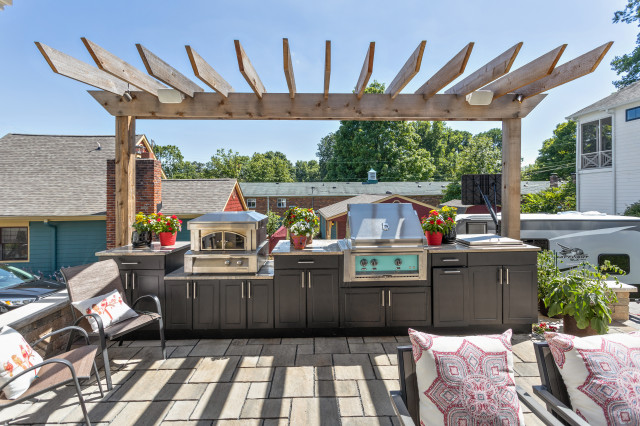

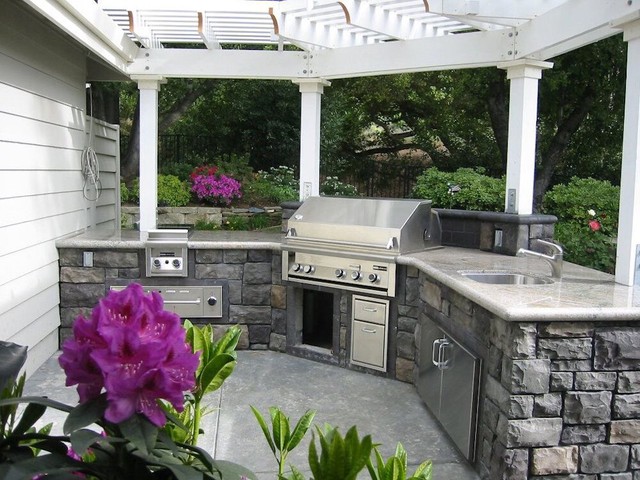




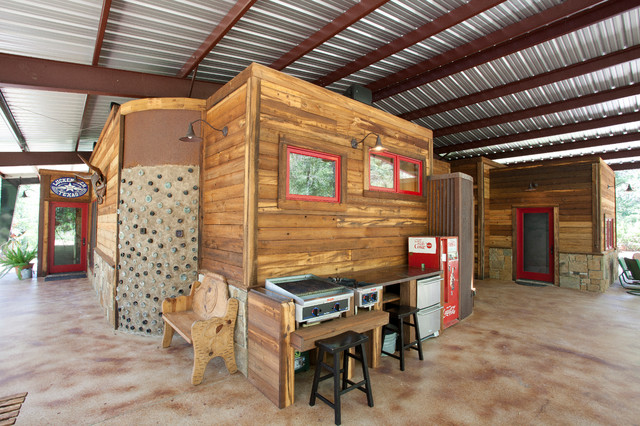

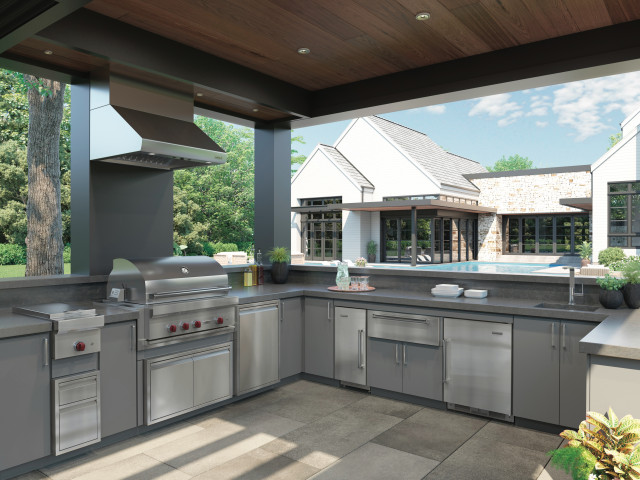


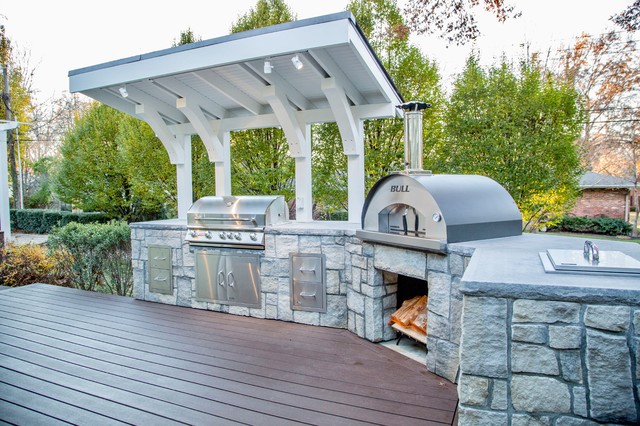

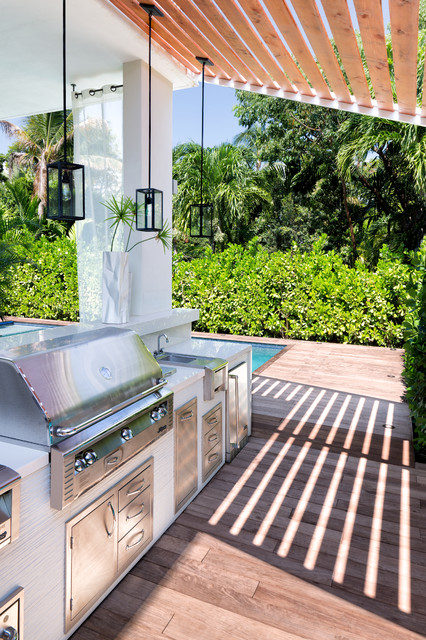

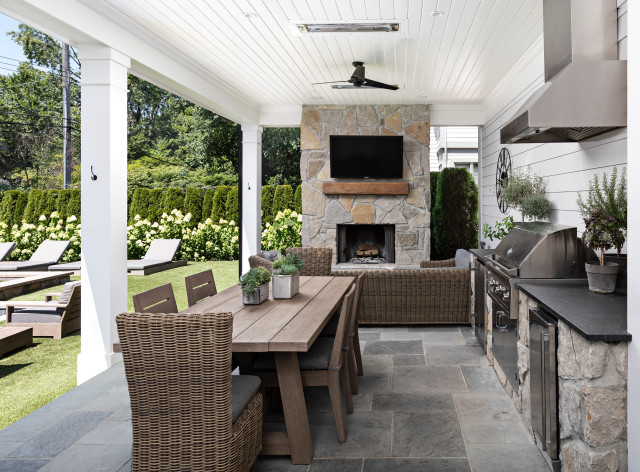

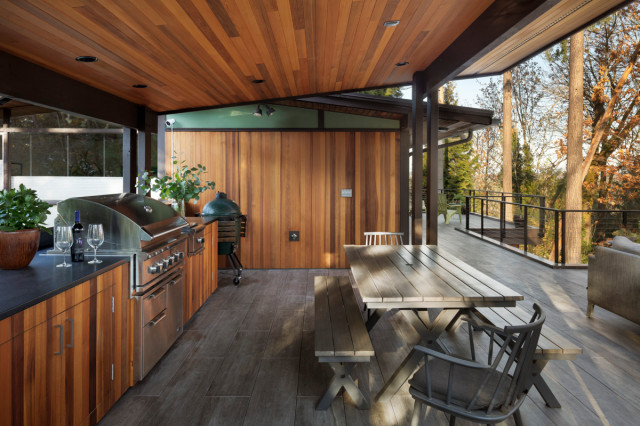
Comments
Post a Comment